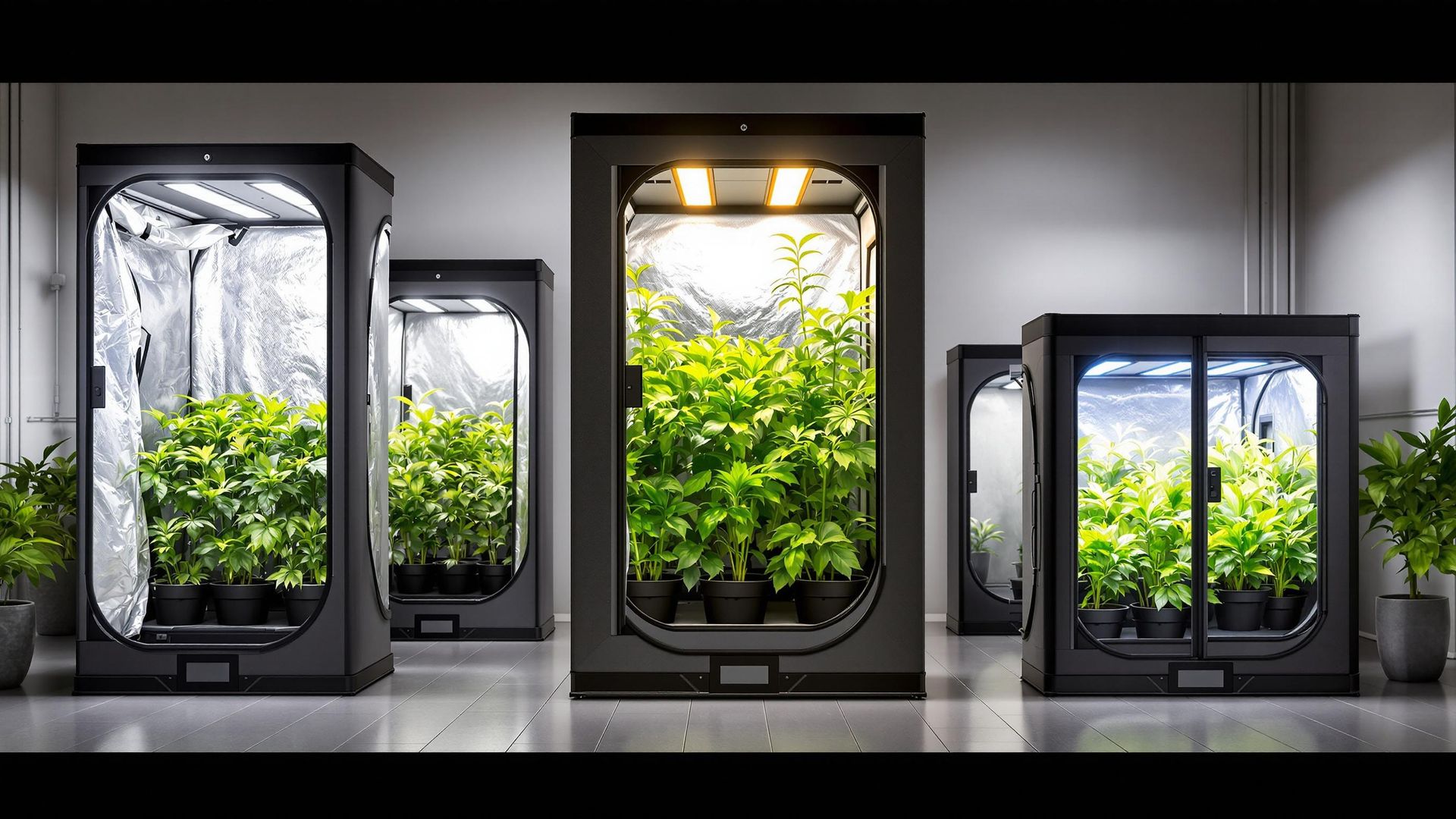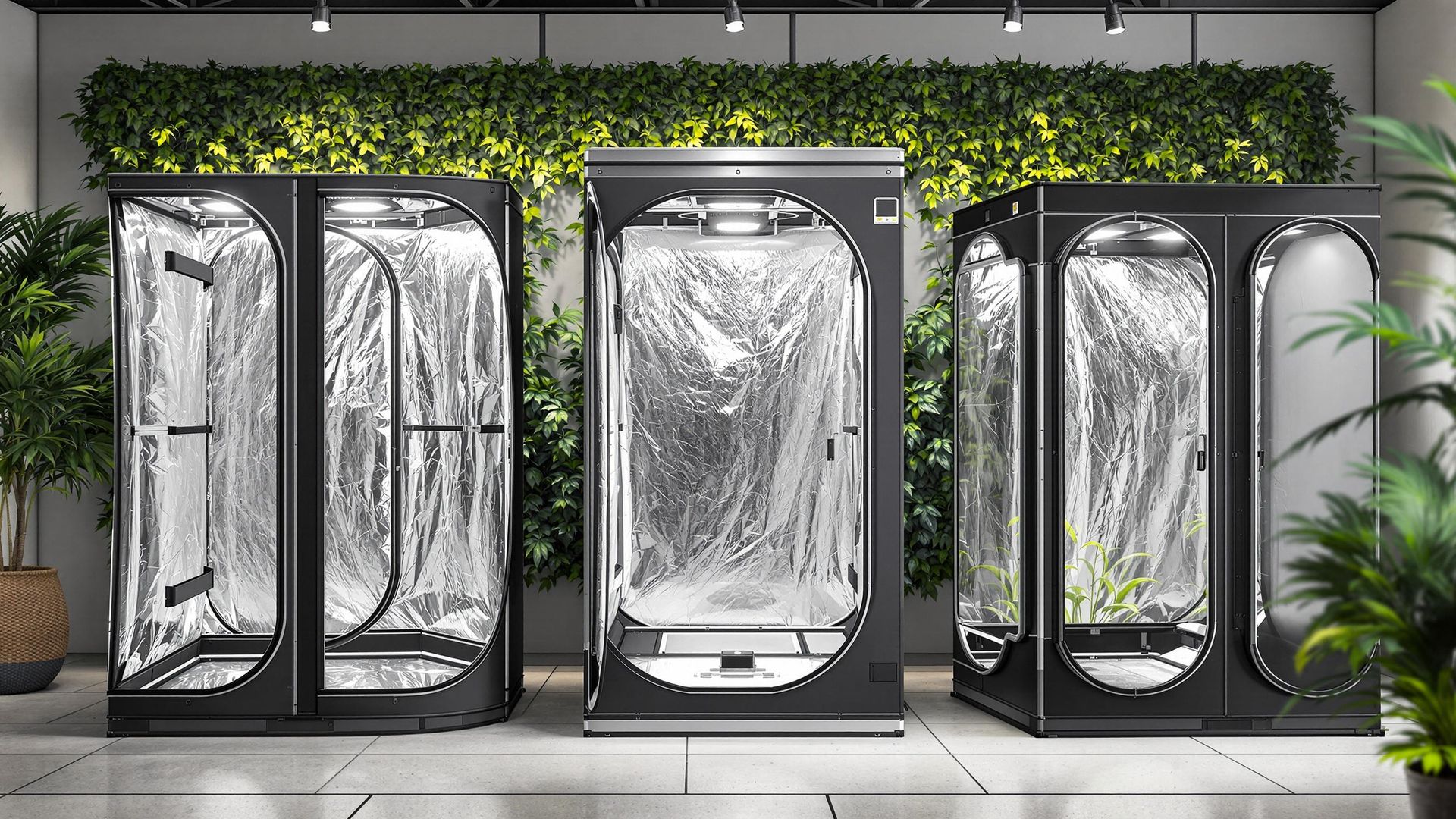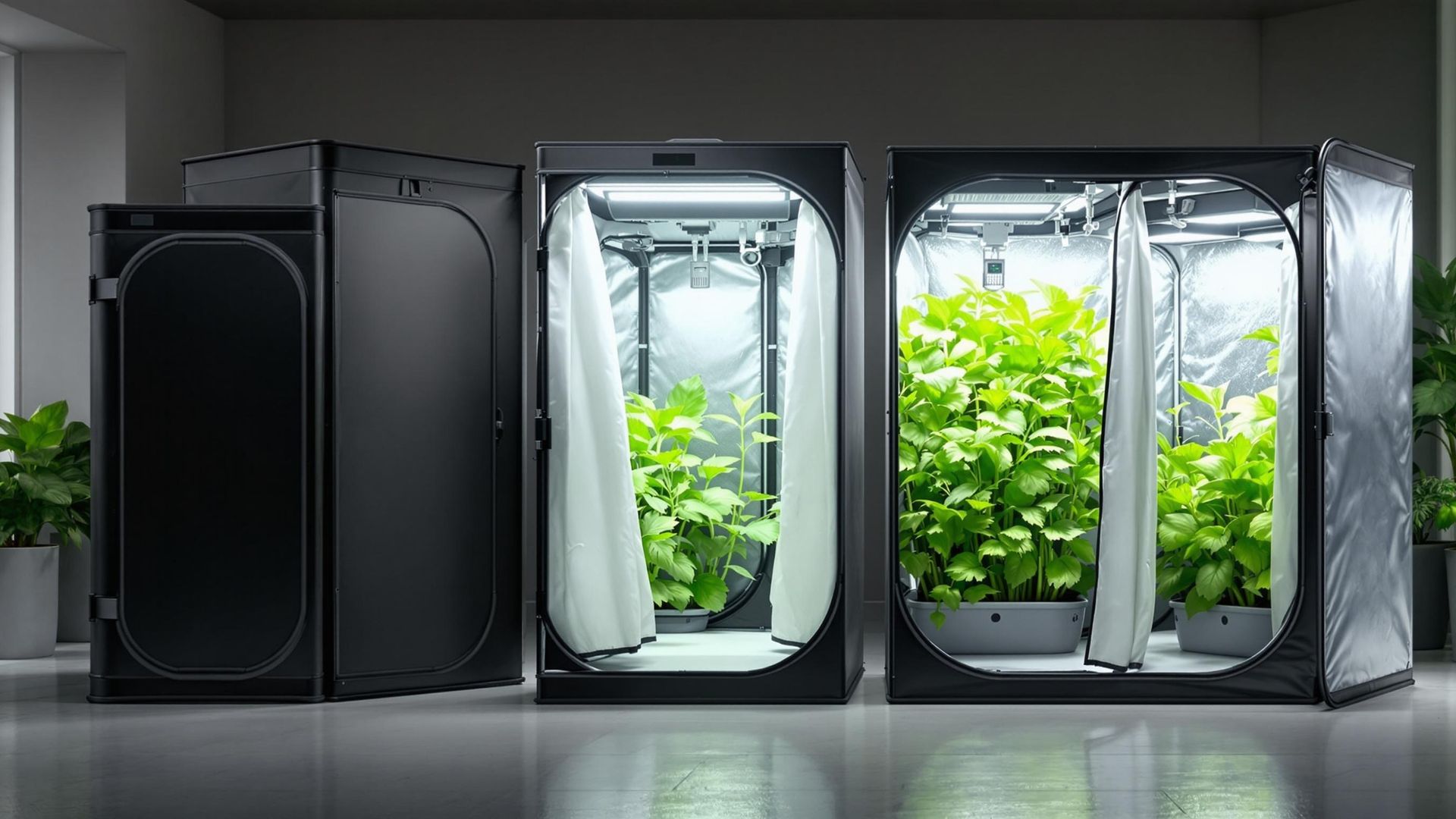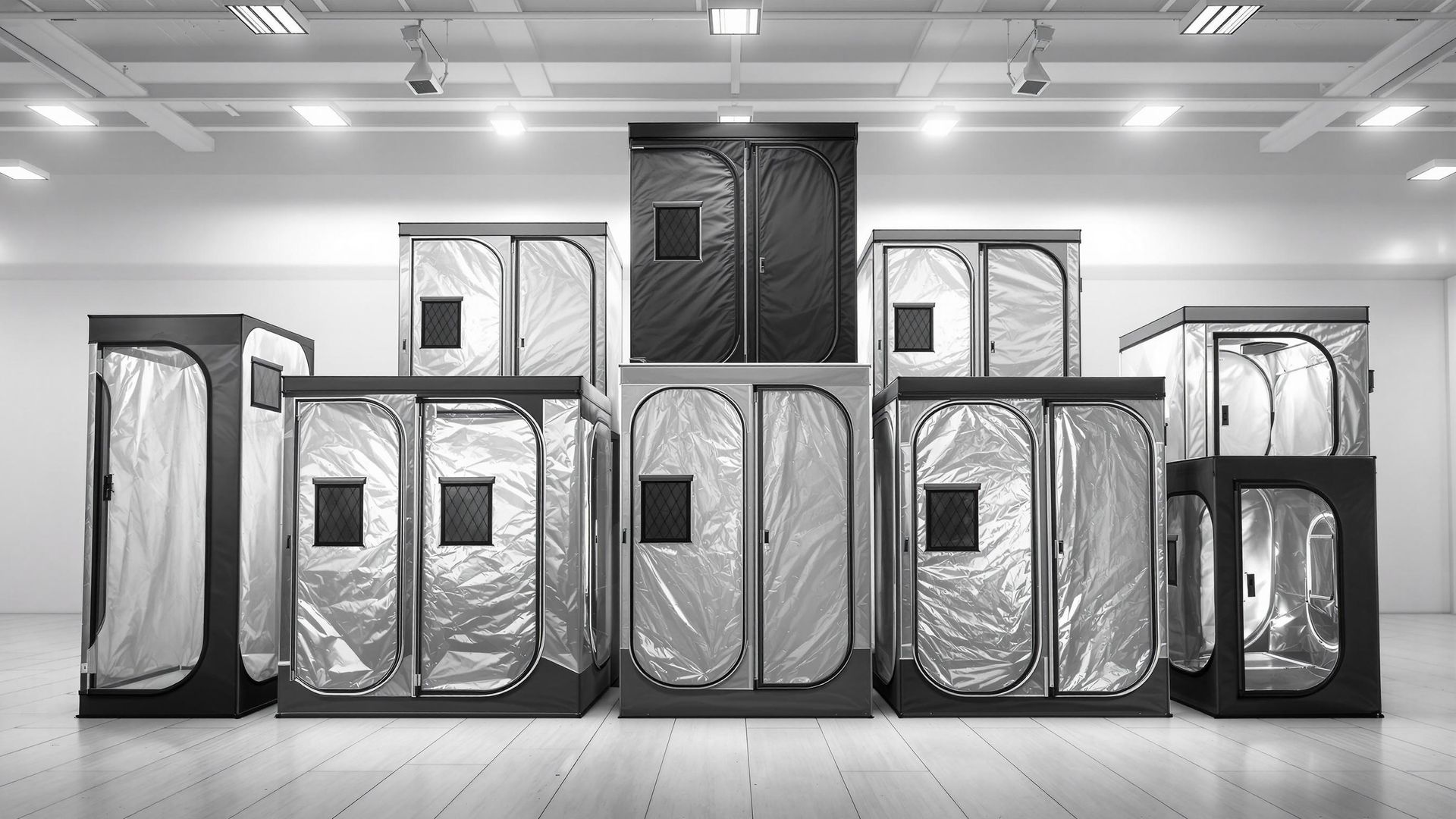.jpeg?1753190872)
When purchasing an indoor grow tent, Think about these things, Is there going to be enough room for what you intend to grow?
The amount of plants you intend to grow, Is there enough room for fans, heaters, extraction fans, and most importantly will you have enough room for general maintenance?
Furthermore, having observation windows helps identify any early warnings like nutrient deficiency or pest infestation so you can act swiftly to address them.
Some tents come with tool pouches, offering convenient storage for gardening tools that you can access easily when maintenance tasks or adjustments need to be made. These pouches are very convenient for keeping your tent tidy, and keeping your tools all in one place and allow for easy storage
When setting up your grow tent to ensure optimal plant growth, the placement of lights, fans and ducting plays an integral part.
Make sure your grow lights are placed at an appropriate distance away from plants to avoid burning or stunted growth.
Furthermore, strategically positioning fans can help strengthen plant stems as well as prevent mould or mildew growth in your grow space.
Setup of your grow tent requires maintaining optimal temperatures and humidity levels.
A thermometer and hygrometer can assist you with this endeavour, while strategically positioning grow lights and fans can help regulate temperatures within the tent itself. Keeping a healthy environment is one of the most important factors, in any grow tent or grow room.

Regular maintenance and cleaning are key aspects to consider to ensure the longevity of your grow tent.
Dust and debris can gather on the tent fabric over time, so make sure to clean the tent thoroughly between harvests.
Hence, it is recommended to gently wipe down the interior and exterior of the tent with a soft cloth or sponge dampened with a mild cleaning solution.
Take care not to use any harsh chemicals that may damage the material of the tent. Inspect seams and zips regularly, to prevent light and odours from escaping.
By addressing any issues promptly, you can prolong the lifespan of your grow tent and maintain optimal growing conditions for your plants.
So establishing a routine cleaning schedule can help prevent the growth of mould and mildew within your grow tent. These fungi thrive in warm, humid environments, making grow tents particularly susceptible to their development.
To combat this, ensure proper ventilation by regularly cleaning or replacing dirty filters in your fans and exhaust systems. Furthermore, keep the surrounding area of the tent clean and free from standing water to reduce moisture levels. If any signs of mould or mildew are detected, promptly address the issue by cleaning affected areas with a mixture of water and vinegar. A perfect growing environment will give you the best results for a healthy and fruitful harvest.

When placing lights in your grow tent, it is key that they are placed at an adequate height above your plants for even illumination and to maximize energy efficiency and customizable spectrum options.
LED lights are especially beneficial due to their energy savings. Fans should also be placed strategically to promote air circulation and prevent stagnant air that can lead to mould and pest issues; carbon filters may help further control odours while improving air quality in your growing space. Ducting plays an essential part in maintaining ideal temperatures and humidity levels within your grow tent.
Position ducting properly to connect exhaust fans to the outside, so hot air generated from lighting fixtures and electronic equipment can be efficiently removed by way of exhaust fans.
Insulated ducting may help reduce condensation build-up to provide a consistent climate for plants. Frequently inspect ducts for blockages or leaks for efficient airflow within your indoor garden.

When faced with common issues in your grow tent, such as light leaks or temperature fluctuations, it is crucial to address them promptly to ensure the health and productivity of your plants.
Light leaks can disrupt the dark cycle needed for proper growth, so carefully inspect your tent for any gaps or areas where light may be seeping through. Another prevalent problem growers encounter is temperature fluctuations within the grow tent.
Consider adjusting the position of fans to improve air circulation and using a thermostat to regulate temperatures more effectively. Additionally, insulating your grow tent properly can help retain heat during colder periods and maintain a stable environment for optimal plant growth.
When selecting the appropriate size of grow tent for your hydroponic system, take into account the number and size of plants you plan to cultivate, the space available in your growing area, and any additional equipment that requires fitting inside it.
Avoid selecting too small of a tent as this will restrict plant growth and limit airflow; selecting too large a tent could waste space and pose difficulties in maintaining optimal growing conditions.
Many grow tents offer options for customization, such as observation windows for easy plant monitoring or tool pouches for storing gardening supplies - features which can make your hydroponic setup even more functional.
Arrange lighting, fans and ducting in an ideal manner within the grow tent to provide adequate ventilation, lighting and temperature regulation, thus creating the optimal conditions for plant life to flourish.
Yes, regularly maintaining and cleaning your grow tent is vital to its long-term viability. Establish a routine to prevent mould and mildew growth by providing adequate ventilation while keeping the tent clear from debris accumulation.

| Tent Guide | |
|---|---|
| Tent Size | Number of Plants |
| 75cm x 75cm | 1 – 2 plants |
| 100cm x 100cm | 1 – 3 plants |
| 120cm x 120cm (XL) | 1 – 4 plants |
| 100cm x 150cm | 1 – 4 plants |
| 120cm x 240cm (XXL) | 2 – 8 plants |
| 150cm x 150cm | 2 – 6 plants |
| 150cm x 200cm | 2 – 8 plants |
| 150cm x 300cm | 4 – 12 plants |
| 100cm x 300cm | 3 – 9 plants |
| 200cm x 200cm | 4 – 12 plants |
| 200cm x 300cm | 4 – 16 plants |
| 240cm x 240cm | 4 – 16 plants |
| 360cm x 240cm | 6 – 24 plants |
| 300cm x 300cm | 6 – 24 plants |
| 600cm x 300cm | 12 – 48 plants |